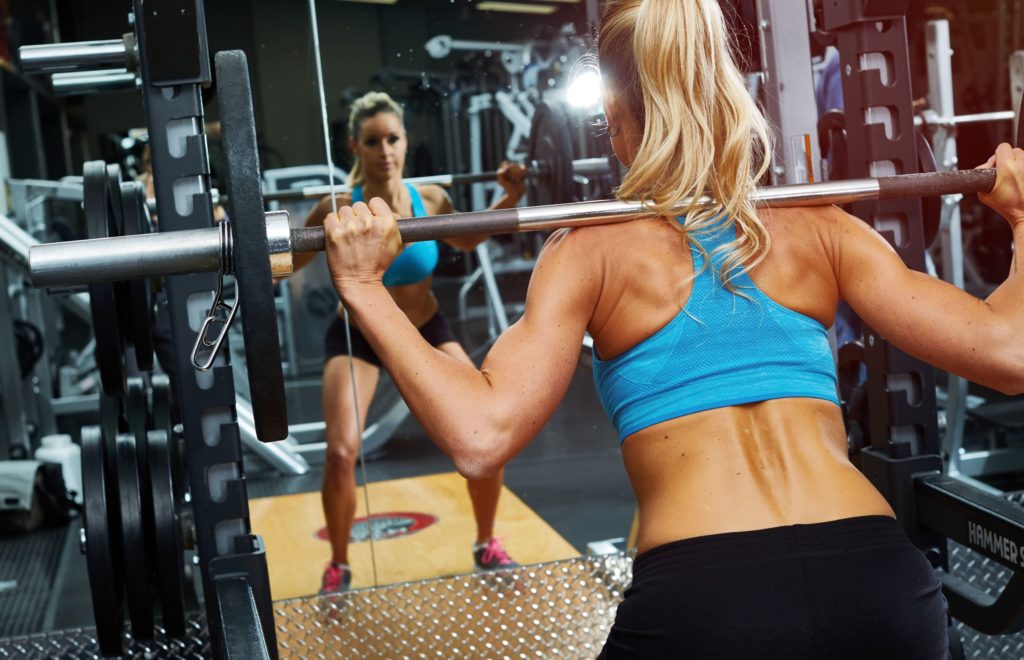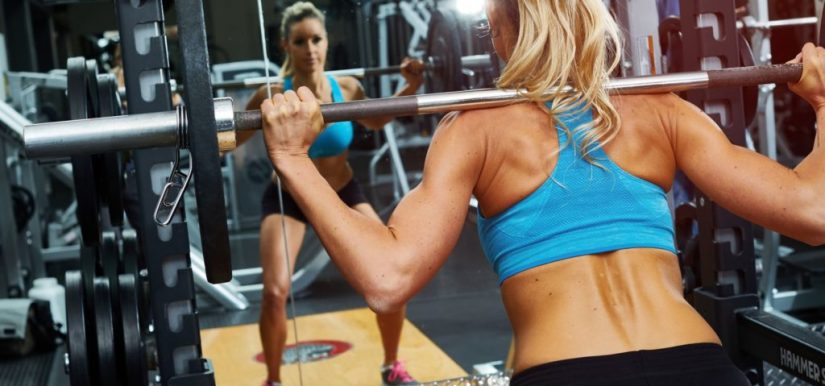I hate the term “girl push-up.” I hate the connotation it breeds; that girls are weak and that they should do these kind of push-ups instead (performed from the knees). Coaches who use it are 1) lazy and 2) are definitely worthy of the stink eye.
But what about squats? Is there such a thing as “squatting like a girl?” Does the term equally make me want to toss an ax into my face? Well, not exactly. In today’s excellent guest post, NY based coach, Meg Julian, provides some insight on why, sometimes, there is such a thing as squatting like a girl.

“Squat Like a Girl”
I’d like to start off by saying that I’m truly honored Tony named his firstborn child, Julian, after me. I hope to inspire the masses as much as I’ve affected Tony. But I’m not here to talk about Baby Julian; I am here because of Baby Julian (yay!).
We are here to talk about why “squatting like a girl” can be different than squatting like a boy.
After working in a female-only gym for five years and training many females clients during the past seven years (not to mention being a woman myself), I’ve found that we often don’t hear about how tips for men might not work perfectly for women, because our bodies (shocker!) are different.
This is one major reason why when I ask new clients to squat, they often struggle to squat, or even look back blankly (really!) Why? Because squats can be complicated, and most exercise science was developed for men by men.
Photo Credit: T-Nation.com
And that’s no way to live, as a great squat can help women with overall strength and weight-loss, which are frequently among the goals I hear from clients.
So, whether you want to put an Olympic barbell on your back or just get in and out of a chair, you’ll want learn how to properly squat. Here are four important ways that women can improve their squat:
#1: Use Your Butt
Squatting is widely considered a phenomenal exercise for building your butt, but many women don’t effectively engage their glutes when they squat. Counter-intuitive, right?
That’s partly because most people sit for much of the day and thus over-stretch their posterior chain, which is the butt and hamstrings; we also tend to over-work the front of our bodies, rather than the posterior.
It’s no surprise, then, that the little elves in your muscles don’t stand a chance.
This condition is called “glute amnesia,” and it’s a term coined by back specialist Stuart McGill — I’m not kidding! If you don’t engage your glutes when you squat, the connection between your muscles and brain will fade, which will make it even harder to use your bum when you want to. In other words, if you don’t use it, you lose it.
To remedy this, the cue we often hear when squatting is to “sit back.”
But this often turns into a balancing act of:
- Gripping the ground with your toes and hanging on for dear life;
- Sticking your butt back;
- Leaning forward and hoping to not fall over; AND
- Doing nothing positive for your body.
Instead, I tell clients to pick their toes up off the ground.
Picking your toes off the ground, and putting the weight in your heels, makes the connection between the brain and posterior chain stronger. This is often what is meant by “sit back,” but our bodies tend to take the path of least resistance, so instead of truly using your glutes, it’s common to become a bit of a surfing expert.
Note from TG: Nice cue to get people to “feel” their glutes work and to understand their role in squatting. While I don’t want to speak for Meg, it’s not one I’d use long-term, especially if the goal is to lift more weight.
If this seems weird and awful, or you topple over, you’re probably not doing it incorrectly; you just haven’t built the strength yet. Keep trying. And you might want to practice over a bench until you get the hang of it.
#2: Redefine the Relationship Between Your Knees and Your Toes.
The misinformed cue we often hear is “Don’t let your knees come past your toes.”
The idea, again, is that your weight should be in your heels and mid-foot instead of being perched up on your toes. The cue has it’s heart in the right place, but it’s just misdirected, much like this meme:
But I love home; that’s where I keep my bed, food and dog.
The problem? Again, everyone is built differently. For example, if you have long femurs (thigh bones), it’s going to be better for your squat to let your knees come past your toes.
The focus, instead, should be on having your shoulders go straight up and down as you squat.
So instead of focusing on your knee placement, double-down on your efforts to keep your weight back, barbell over mid-foot, and your back upright.
#3 And One More Thing About Your Feet.
It’s common to be told “Squat with your toes facing forward,” but most women will feel more comfortable turning their toes out a bit when they squat. The female hips and the way the leg bones fit into them are built to be a little wider; you know, “birthing hips” and all.
So instead of focusing on your feet facing forward, focus on aligning your knees above your toes, and for women, this likely means turning your feet slightly outward — and your knees along with it.
Trying to force a more narrow stance or twist the toes in a direction they don’t naturally want to go will cause a lot of tension in the knees. It’s like trying to jam a drawer shut that’s off its runners — not pleasant.
This may be perfectly fine for some and even how most assessments are done, but it’s possible that this is not the ideal form during every workout. Just look at the way a little kid naturally sits in a sandbox (do they still have those?): knees are wide and toes are turned out.

Not sure how wide to point your toes? I recommend standing barefoot with your heels together on a smooth surface like wood, and squeeze your glutes. Then, separate your feet until your heels are under your shoulders. This is likely the most comfortable position for a squat for your body. Play around and see what feels best.
#4: Show Your Ankles Some Love.
Tight calves can lead to a lack of dorsiflexion, which is the ability to flex the toes up toward the shins. It’s a problem I often see in women who wear high heels or flip flops and never stretch.
Lacking range of motion in your ankles is terrible for nailing a squat. By limiting the bend, your body will find a way to compensate by flattening arches, caving knees in toward each other or leaning too far forward.
Here’s a simple test of ankle mobility: Place your toes four inches from a wall. Without lifting your heel, can you bend your knee until it taps the wall. If yes, you’re good! If no, keep practicing twice a day until you can. Keep it up until you can consistently hit a wall. In a good way.
Wrapping It Up
Most women have goals of losing weight, improving their backsides and getting stronger. While these goals are a bit vague, I do have a specific answer: Squat as much as you can handle — after you master squatting like a girl.
Author’s Bio
If you enjoyed what you read, want to learn more or just need to know where to send the hate mail, visit me HERE, where you can subscribe to my weekly email dedicated to tips like these and improving technique and strength for obstacle course racing. You can also follow me on Instagram HERE.
Megan Julian is a New York-based NASM Certified Personal Trainer, with additional certifications such as, FMS L2, NASM-CES and CFSC. She specializes in preparing brides for the big day, helping obstacle course racers improve their times and working with clients of all ages overcome injuries. In her free time, she enjoys running through the woods, jumping over walls and crawling under barbed wire — sometimes at events such as the World Championship Obstacle Course Race in Canada.



